Our Norfolk regional group volunteers report on a successful working party, despite coronovirus restrictions...
St Martin’s is one of four medieval churches in the current parish of Shotesham, a small village five miles south of Norwich. All Saints’ and St Mary’s are in use, and only a small fragment of masonry survives of St Botolph’s. St Martin’s is a roofless church consisting of chancel, nave, west tower and remains of the south porch. The walls are made of flint with some brick and stone dressings. There is evidence that the church was constructed in the 11th century when it was given to the Abbot of St Benet’s by Edward the Confessor. The church may have been partially destroyed during the Dissolution and was described as ruinous when Bloomfield surveyed many of the county’s fine medieval churches around 1806. Even so, the tower still stands virtually complete, together with some remaining walls to the nave and chancel. The whole site is still consecrated and is in the care of the Parochial Church Council (PCC) of Shotesham.
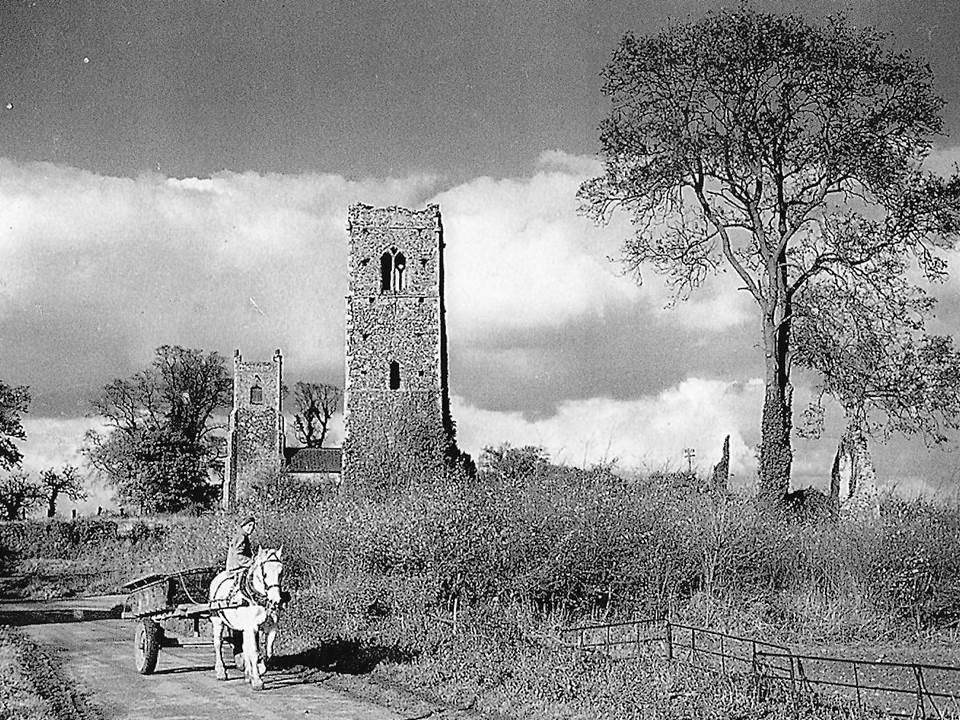
A view of the ruins in 1959 (Courtesy of Jimmy Hazel)
Since the 1950s ivy took hold of the masonry and elm suckers and scrub began to take root in the churchyard as well as the nave. This hid just how much of the ruin remained and how much damage was taking place beneath the undergrowth. A large tree fell through into the Chancel demolishing whole sections of the flint wall.
Work started on the consolidation of these ruins in 2009 by which time the whole structure was covered with ivy and almost impenetrable brambles, nettles, saplings and scrub. Neglected for many years, they surely would have collapsed as the saplings became larger and the tangled ivy sent roots into the loose core behind the facing flints. In time these roots would have loosened the wall itself and as individual flints fall away, rainwater washes away the “fill” and the whole structure becomes unstable and dangerous. The first task for the volunteers, working on behalf of the PCC, was to tackle this undergrowth. It was very hard work and took several months to complete, but finally, as autumn arrived, the ruins were exposed and the debris cleared away.
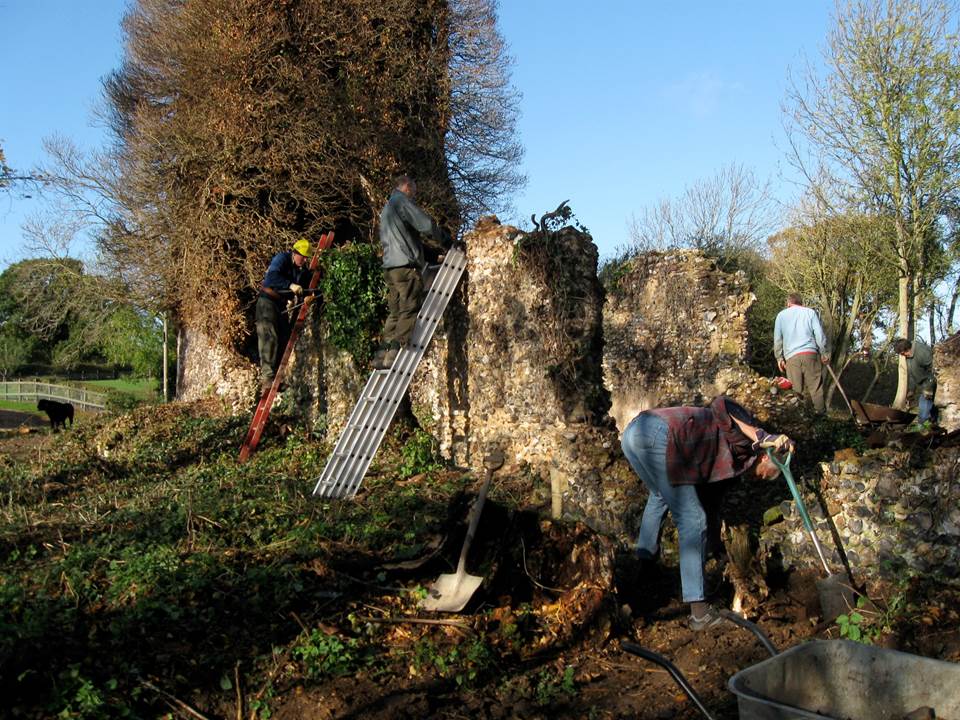
Volunteers clear away debris and roots from the remaining walls in 2011. (Courtesy of Mike Fenn)
In order to safeguard the exposed wall tops from the ravages of winter, the PCC organised for a local builder to carry out essential remedial works including masonry repairs and ‘rough racking’ (hard-capping with mortar flaunching) to the wall tops. The tower required extensive masonry repairs.
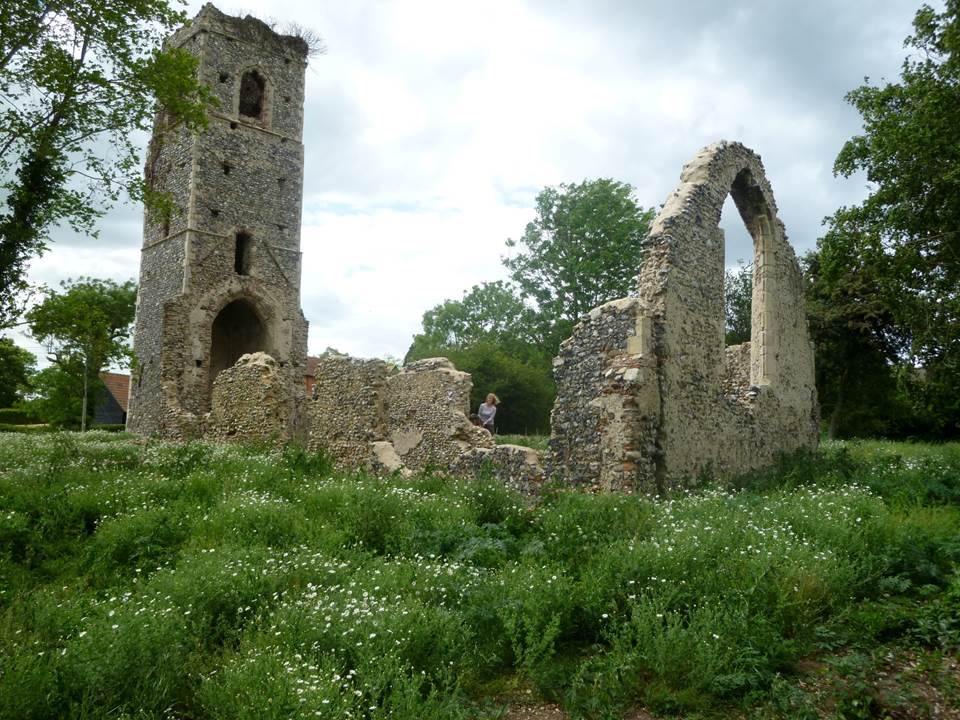
View from the east after the low level repairs in 2011; tower walls repairs took place in 2012.
In the past year the SPAB Norfolk regional group has been working closely with the PCC, Shotesham Village Association and local residents with the intention to help preserve and maintain the ruin. With strong encouragement received from local community, we decided to arrange a series of Heritage Skills Training Workshops covering the whole conservation process: Measured and condition surveys, Analysis and specification, Conservation, repairs and maintenance.
The first workshop, measured and condition surveys, took place at the beginning of March 2020. The day, attended by 20 very keen delegates from Shotesham and other parts of the country, was a mix of lectures and practical sessions covering the history of the ruin and previous phases of work, survey techniques and measured survey, traditional materials, decay and condition survey.
The step-by-step approach shaped the decision making process as we looked through the history and condition of the ruin and discussed various options for repairs and maintenance. One of the topics discussed was protection of the walls of a ruinous building, where the weathering details are lost and previously sheltered components become exposed. The core of the walls were never meant to be subjected to weathering and are more susceptible to deterioration, as water seeps into the fabric rather than being diverted away. Various means can be employed to offer protection and stave off decay, quite broadly categorised into soft or hard capping; both have advantages and disadvantages.
The walls at St Martin’s have previously been hard-capped by repointing with a hard (hydraulic) lime mortar using a method called ‘rough racking.’ The harder capping material is brittle and cracks have developed through seasonal movement; rainwater once again penetrates the core of the wall, where the capping exacerbates the issue by inhibiting evaporation.
Soft-capping is a major research topic for Historic England who defines it as ‘the use of grass and other plants plus soil to cover horizontal masonry surfaces to protect the wall below.’ It is based on the premise that water will be taken up by the plant growth through transpiration, preventing it from absorbing into the masonry. The look and feel emulates that often associated with the romantic image of a ruin, indeed it can be seen naturally occurring already in some areas at St Martin’s. Natural, local turf and sedum are selected carefully with shallow rooting systems to prevent them physically growing into the walls and damaging them that way.
We came back with the idea to trial soft capping in a limited area of the ruin, in this case the south porch and nave south wall west end. At the same time, we agreed to analyse the historic mortars and trial different mixes aimed to replicate appearance and performance of traditional mortars which had proved to be successful.
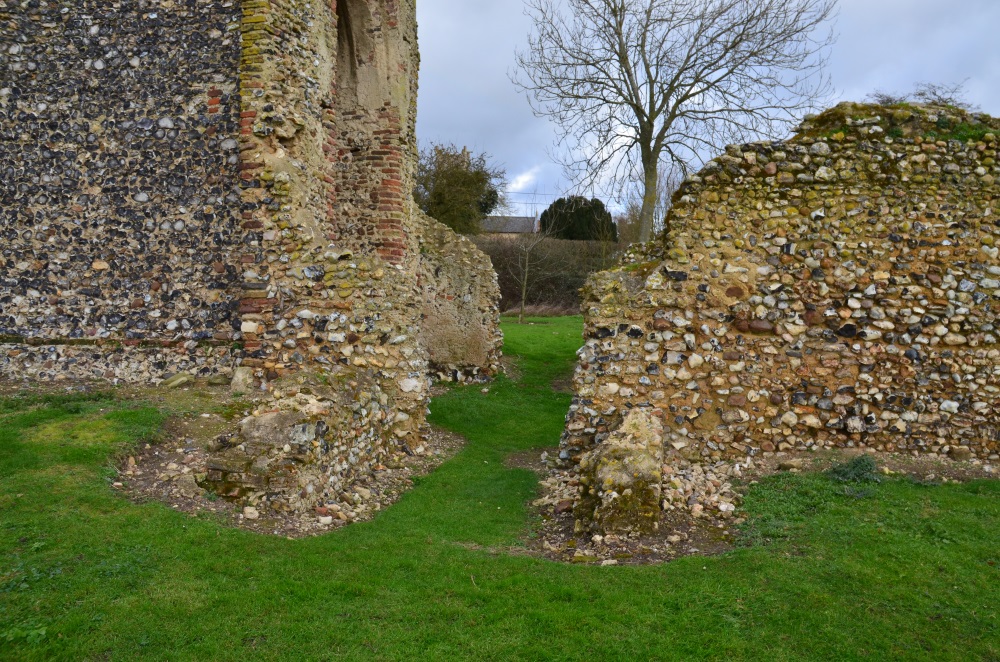
View of the south porch and nave west end, March 2020.
Covid-19 disrupted the plans for a second public workshop which was to install the trials and discuss conservation and management options. But the best time to install soft-capping is the autumn so we decided to proceed with six volunteers, a bag of quick lime, local sands, spades, enthusiasm and hand-gel.
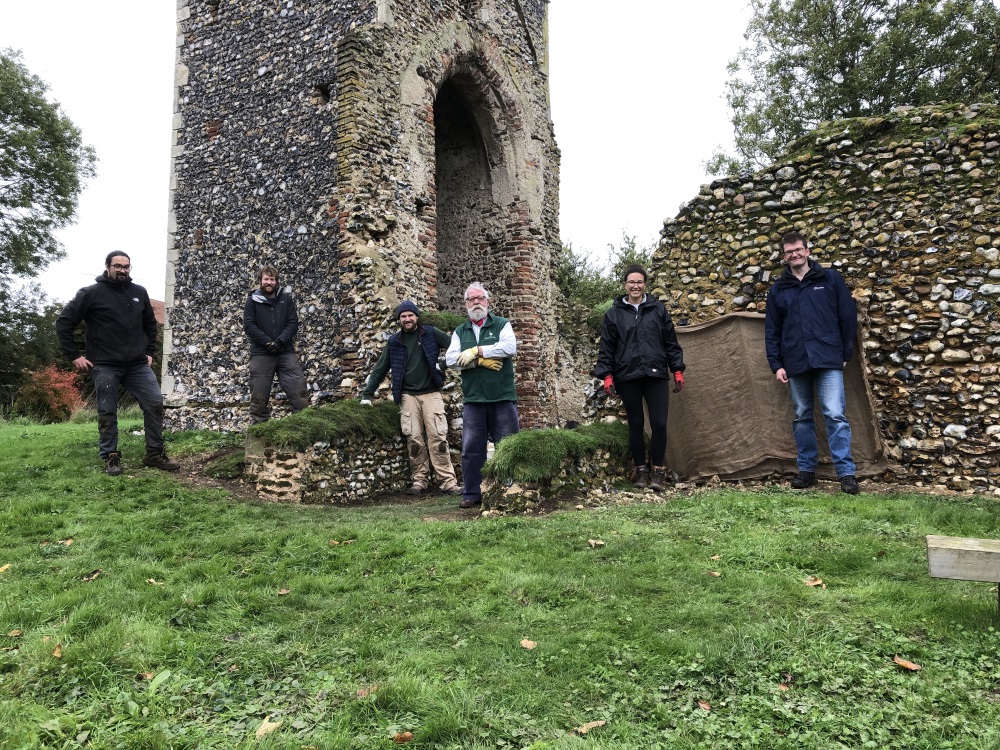
Volunteers after installation of soft capping and lime mortar samples (courtesy of Glenn Gammons)
We’ll now monitor the performance of the soft capping whilst we plan for the next workshop, hopefully a public event at St Martin’s ruined church, a very special and much loved place.
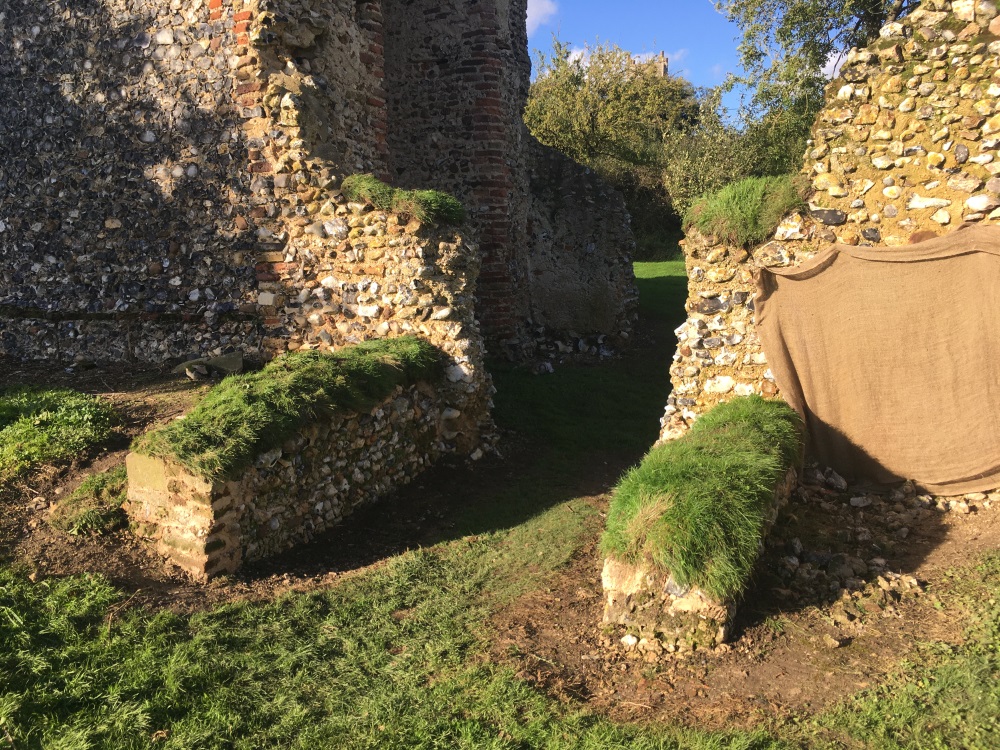
The day after the installation (25 October 2020) following a night of gales and rain
Our thanks to Domenico and the whole team at SPAB Norfolk, with special thanks to Michael Knights. Our regional groups are run by members for members. Not a member yet? Join us today and support our work for old buildings across the country.
